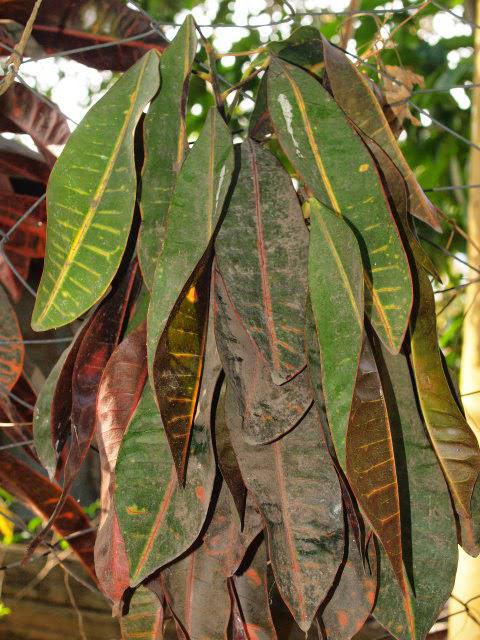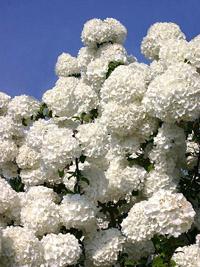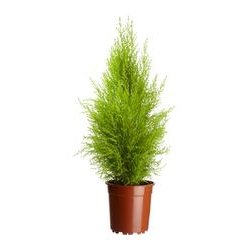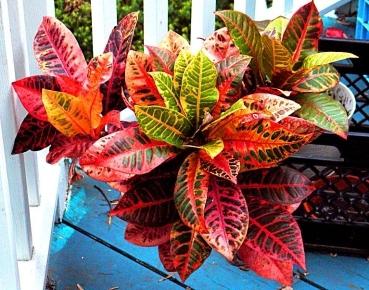Croton: Care and Reproduction
Croton is one of the most beautifulrepresentatives of the vast family of Euphorbiaceae. Even in the colorful tropical forest, its bright crown is conspicuous, and even more so the room in which it grows is transformed and revitalized.
The genus is represented by herbaceous plants,trees and shrubs, in nature growing in Oceania and tropical Asia. In indoor culture crotones are extremely popular. There are many varieties and forms in which the leaves differ in color, size, number and arrangement of veins and spots. For the sake of a motley bizarre foliage, Croton is grown.
Care for this attractive culture is considered troublesome and difficult. Although this is far from the most capricious plant, and if desired, it is possible to find an approach to it.
Care for croton, regardless of species and variety,is based on several basic rules. First, like any other plant with brightly colored leaves, it needs good lighting. But this requires protection from direct sun, otherwise the plant will burn. Secondly, it is necessary to regularly moisten the air. Third, the plant is thermophilic, so drafts and low temperatures have a detrimental effect on it. And, fourthly: the croton reacts badly to watering with hard water and for the presence of lime in the soil. Most tropical species exist precisely in such conditions, therefore, if you have a certain experience, you can easily grow a healthy and beautiful croton.
Care of the plant begins by choosing a place. It should be located at the windows of the south-western or south-eastern exposure. The south side is also suitable, but with protection from direct sun. With poor lighting, the colors will fade, the color of the leaves will become more uniform and the plant will lose its decorative qualities. It is good, if it is possible to lighten the croton in winter, since it has no expressed rest period.
Temperature jumps and drafts are extremelyundesirable for most houseplants. Croton is no exception. Care for this culture should be aimed at creating a stable microclimate, ideally similar to the microclimate of the rainforest. Proceeding from this, it is necessary to determine the moisture regime. It is clear that the drying of the substrate adversely affects the development of the plant. If the lack of moisture is observed for a long time, at best, the lower leaves fall off. In the worst - the plant dies. If this still happened, you need to be able to equalize watering. In no case can not immediately pour a pot of half a bucket of water, hoping to compensate for its lack. This is a gross error. To water such a plant must be very carefully, gradually increasing the dose and letting the soil coma dry. And if you still treat the bush with epine or another adaptogen, there is a chance to save even the croton that has dropped all the leaves.
Care for most tropical plants, likeNormally, it requires regular air humidification. In this case, this procedure is also necessary, since in low humidity conditions the tips of the leaves start to dry and curl, as a result the bush loses decorativeness.
Another important procedure is the formation of the crown. Young specimens are simply pinched, and adults are cut every year every 20 cm of growth, on the external kidney. If this is done regularly, you can get a compact and lush croton.
Reproduction of a plant is a simple matter. Cuttings take root in peat pills, sand, peat-sand mixture and even in water. From the cuttings you need to wash off the milky juice and slightly dry the cut. Before planting in the substrate, it is desirable to use root stimulants. The temperature for successful propagation is +24 ° С. The grown plants are transplanted into a soil mix consisting of equal parts of humus, coarse-grained sand, peat, leaf and turf.
When working with croton, remember that his milky juice is toxic, and observe precautions.







